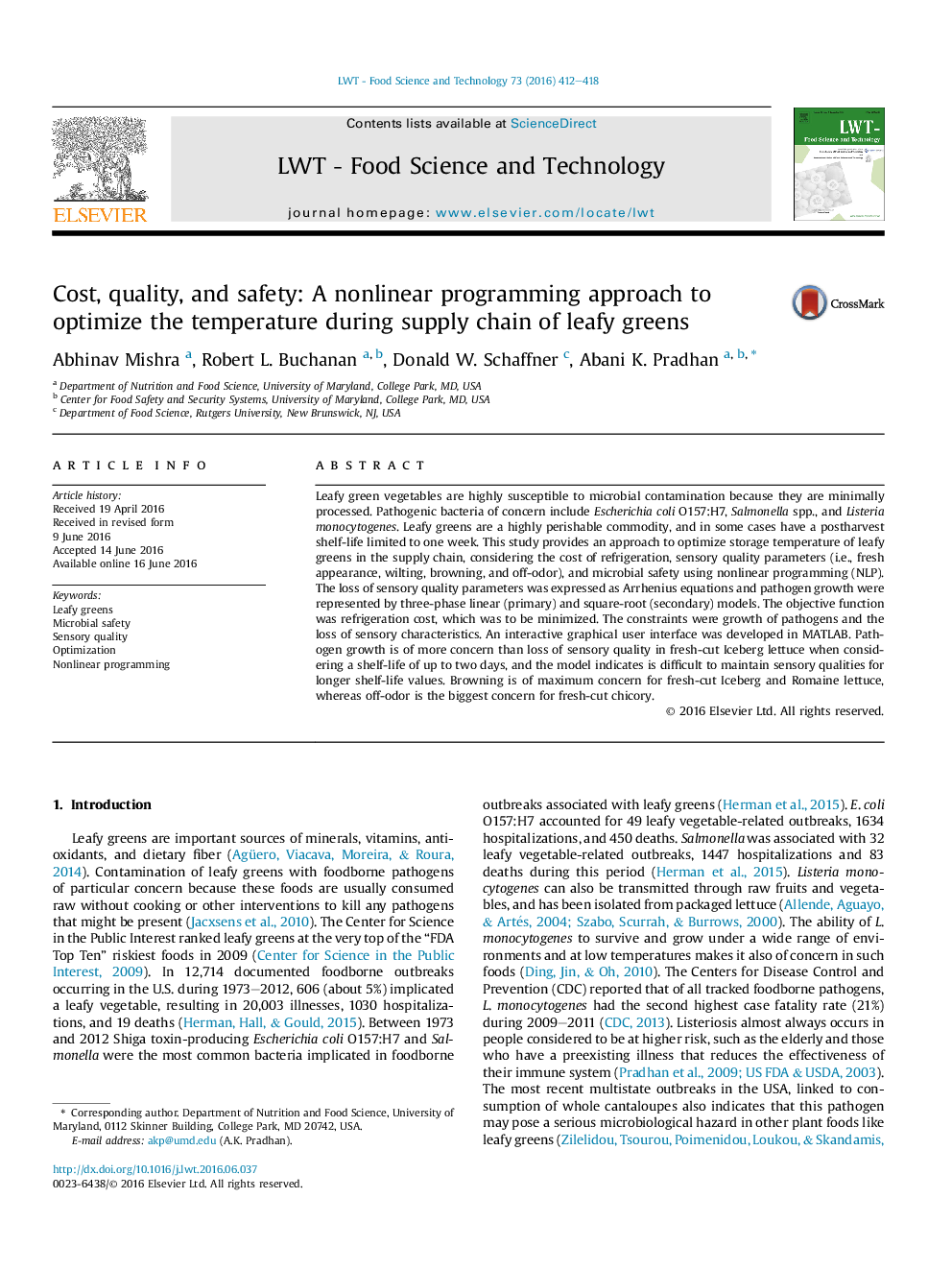| Article ID | Journal | Published Year | Pages | File Type |
|---|---|---|---|---|
| 4563378 | LWT - Food Science and Technology | 2016 | 7 Pages |
•Nonlinear programming (NLP) was used to optimize temperature for leafy greens.•Objective function was cost; constrained were sensory quality and microbial safety.•Predicted shelf-life of leafy greens using lenient standards was 4–11 days.•Browning is of maximum concern for fresh-cut Iceberg and Romaine lettuce.•Off-odor is of maximum concern for fresh-cut chicory.
Leafy green vegetables are highly susceptible to microbial contamination because they are minimally processed. Pathogenic bacteria of concern include Escherichia coli O157:H7, Salmonella spp., and Listeria monocytogenes. Leafy greens are a highly perishable commodity, and in some cases have a postharvest shelf-life limited to one week. This study provides an approach to optimize storage temperature of leafy greens in the supply chain, considering the cost of refrigeration, sensory quality parameters (i.e., fresh appearance, wilting, browning, and off-odor), and microbial safety using nonlinear programming (NLP). The loss of sensory quality parameters was expressed as Arrhenius equations and pathogen growth were represented by three-phase linear (primary) and square-root (secondary) models. The objective function was refrigeration cost, which was to be minimized. The constraints were growth of pathogens and the loss of sensory characteristics. An interactive graphical user interface was developed in MATLAB. Pathogen growth is of more concern than loss of sensory quality in fresh-cut Iceberg lettuce when considering a shelf-life of up to two days, and the model indicates is difficult to maintain sensory qualities for longer shelf-life values. Browning is of maximum concern for fresh-cut Iceberg and Romaine lettuce, whereas off-odor is the biggest concern for fresh-cut chicory.
